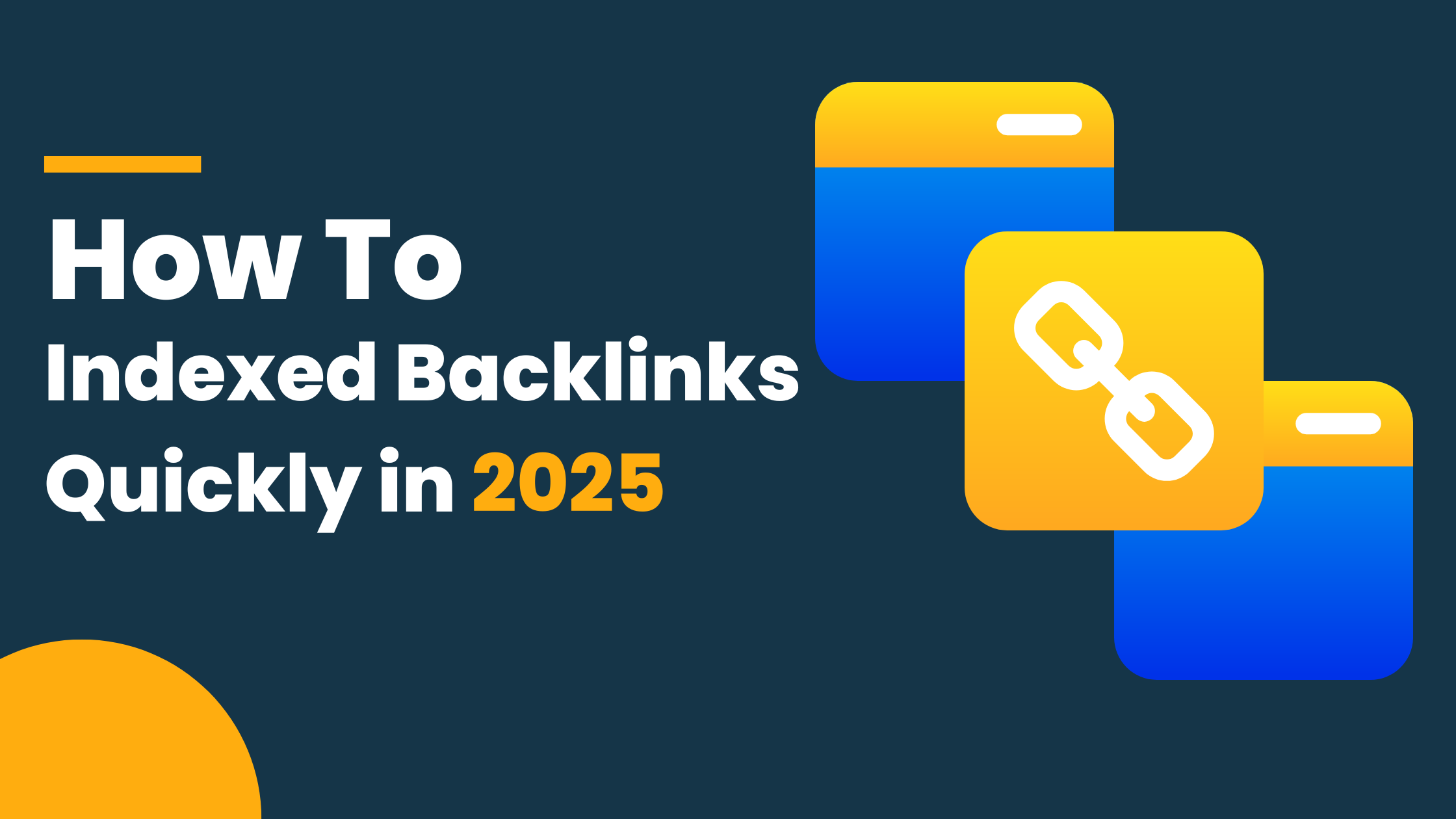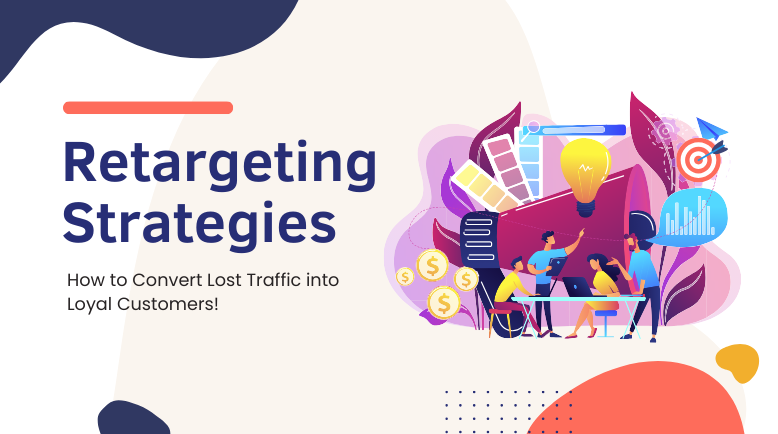Backlinks play a crucial role in improving your website’s authority and search engine rankings. But obtaining backlinks alone isn’t enough, it’s also crucial to make sure search engines index them. That’s where efficient backlink indexing comes in—it’s a key factor to increase the effectiveness of your SEO efforts. You can make sure your backlinks are indexed swiftly with the help of the best SEO services, which will improve your ranks and increase traffic. In this blog, we’ll explore strategies to index backlinks faster and discuss common obstacles hindering the process.
Understanding Backlink Indexing and Its Importance
Backlinks are crucial for increasing website authority and search engine ranks in search engine optimization (SEO). Therefore, search engines must first index backlinks before they can impact your SEO. Businesses trying to increase their online visibility must comprehend the significance of backlink indexing.
What Is Backlink Indexing?
The process by which search engines like Google find, examine, and store links that lead to your website is known as backlink indexing. A backlink strengthens your website’s SEO by becoming a part of its recognized link profile after it is indexed. Search engines routinely search the web for content and links to comprehend the relationships between websites. Backlinks that are indexable act as “votes of confidence,” indicating search engines how valuable and reliable the content is.
Even high-quality backlinks are useless without indexing since search engines do not record them. Conversely, indexable backlinks improve your website’s authority, search visibility, and ranking potential.
Why Is Backlink Indexing Important?
Proper indexing is critical for backlinks to benefit your SEO efforts. Here’s why indexing is essential:
Boosts Website Authority
- Each indexed backlink serves as a vote of trust for your website.
- More quality backlinks indexed make your site appear authoritative, helping rankings.
Enhances Search Visibility
- Indexed backlinks contribute to higher positions in search engine results pages (SERPs).
- They signal reputable references, leading to increased organic traffic.
Drives Organic Traffic
- Indexed backlinks bring referral traffic from other websites.
- High SERP rankings drive more website clicks, growing leads, and engagement opportunities.
Speeds Up SEO Results
- Without indexing, backlinks take longer to impact SEO.
- Indexed backlinks deliver faster results, immediately boosting your site’s authority and relevance.
Using professional SEO services ensures that your backlinks are indexed efficiently.
How Long Does It Take Google to Index Backlinks?
The duration of time that Google takes to index backlinks might vary greatly, from a few days to weeks. Google’s indexing speed depends on several factors:
- Authority and Relevance of the Source Website: Backlinks from authoritative, credible websites in your niche are indexed faster by Google.
- Crawl Frequency: Websites that are crawled more frequently, especially those with updated content, see faster indexing of their backlinks.
- Site Health: A well-optimized website with a solid internal linking structure accelerates the indexing process for backlinks.
- Authority of the Referring Domain: Older, established domains tend to have their backlinks indexed more quickly than newer domains.
- Link Sources: Having a variety of high-quality backlink sources speeds up indexing, while spammy or poor-quality connections might cause it to delay.
- Anchor Text Optimization: Google can index backlinks more quickly if anchor text is properly optimized to help it comprehend the context.
- Page Load Speed: Fast-loading pages are crawled more efficiently, allowing backlinks on those pages to be indexed faster.
Businesses can implement various link-building strategies and utilize SEO services to speed up the process. Partnering with a reliable search engine optimization agency ensures quicker backlink indexing, maximizing the effectiveness and impact of SEO efforts.
Strategies for Faster Backlink Indexing
Index Backlinks by Submitting Them Manually
- When you create backlinks, especially on new or lesser-known sites, search engines may take time to discover them.
- Manually submitting these links to content-sharing platforms increases their chances of being indexed faster.
- Tools like Ahrefs and SEMrush have link submission features that help ensure these new links are “seen” by search engines promptly.
Build High-Quality Backlinks
- Prioritize obtaining backlinks from reputable and relevant websites such as Medium and Blogger.
- Search engines are informed that your content is essential and trustworthy by high-quality backlinks. This can significantly improve your website’s rankings.
- Quality always outweighs quantity when it comes to backlinks, so be sure the connections you’re receiving are from reliable sites in your industry.
Use Google Search Console (GSC) URL Inspection Tool
- The URL Inspection Tool in GSC allows you to submit specific URLs for indexing, example blogposts which are invaluable for important backlinks you want to be indexed quickly.

- After creating a backlink, use this tool to check if Google can access it.
Google Indexing API (Application Programming Interface)
- The Google Indexing API is a powerful tool for notifying Google directly about new content or updates.
- This is particularly helpful for time-sensitive content that you want indexed immediately.
- Ensure your backlinks are indexed rapidly through API to avoid waiting for Google’s crawlers to find them.
Ping the Linking Page URLs
- Pinging is a process of notifying search engines about a new URL, ensuring they check it out sooner.
- When you create backlinks, especially on newly published pages, pinging their URLs speeds up indexing.
- Tools like Pingler, Ping-o-Matic, and PingMyLinks allow you to quickly ping URLs to search engines, helping them identify and index new backlinks faster.
- This practice can accelerate indexing, making it a common tactic used by search engine optimization agencies to increase visibility and speed up crawling.
Monitor and Troubleshoot Your Backlinks
- Regularly monitoring your backlinks helps you catch issues like broken links or penalties early.
- Tools like Google Search Console, Ahrefs, and Moz make it easy to analyze your backlink status.
- If you spot low-quality or broken links, disavow or replace them to protect your SEO and improve your site’s link profile.
Use Real Simple Syndication (RSS) Feeds to Index Backlinks
- RSS feeds help search engines find new content updates automatically. Many SEO services use this method to enhance indexing speed.
- Adding your backlinks to an RSS feed streamlines the submission process, making it easier for search engines to crawl.
- RSS feeds submitted to aggregators and directories are frequently crawled, making them valuable tools for faster backlink indexing.
- To leverage this, use an RSS feed generator to create a feed with your backlinks and submit it to popular RSS aggregators and directories.
Send Sitemap to GSC
- A sitemap provides Google with detailed information for sites with content to help index links quickly.
- Sitemaps include URLs which make it easier for search engines to rank the content.
- Ensuring backlinks are indexed efficiently can significantly boost both your site SEO.
- This approach improves visibility and indexing speed, especially for content-heavy pages.
Index Backlinks Faster with Web 2.0 Sites
- Platforms like WordPress, Blogger, and medium are indexed frequently because of their high authority and regular crawling.
- By creating posts with backlinks on these sites, you increase the chances of your backlinks being indexed sooner.
- These platforms are ideal for faster indexing and can transfer authority to your site, supporting better rankings.
Post Backlinks to Your Own Website
- Using internal backlinks helps search engines navigate your website more effectively and discover new pages.
- Linking new content from authoritative, existing pages improves your site’s internal structure, making it easier for search engines to index.
- It also enhances the crawlability and SEO of your site overall.
Post Backlinks on Social Media and Forums
- Social media platforms and forums are frequently crawled by search engines, making them excellent places to share your backlinks.
- Posting on platforms like Facebook, Twitter, or Reddit can increase the exposure and indexing speed of your links.

- Additionally, social shares in groups and discussions around your content can drive traffic and signal to search engines that your content is valuable.
- Infact, according to Ahrefs, link builders who utilize social media to share their backlinks generate 22% more links than those who don’t. This highlights the power of social platforms in enhancing the visibility and indexing of your backlinks.
Challenges in Getting Backlinks Indexed
Backlink indexing might be difficult at times. The following are some typical obstacles:
1. Low-Quality Backlinks
Backlinks from low-authority or inactive sites may take longer to index, impacting the effectiveness of your link-building strategies.
Tip: Focus on high-authority, relevant websites to secure backlinks that add value to your SEO.
2. Content Quality and Relevance of the Linking Page
Backlinks in low-quality, irrelevant, or thin content are indexed more slowly, as Google prioritizes valuable, relevant content.
Tip: Place backlinks within high-quality, topic-relevant content. Links from well-researched and engaging pages are indexed faster because Google views these pages as valuable to users.
3. Spammy or Irrelevant Link Sources
Links from spammy or unrelated sites reduce indexing speed, as Google often considers these links low-value or even penalizes them.
Tip: Regularly audit your backlink profile and disavow harmful links to maintain a clean, valuable link profile.
4. Complex Site Structure
Websites lacking a solid linking structure or having complex navigation can hinder Google’s bots from finding and indexing backlinks effectively.
Tip: Simplify navigation and use a clear URL structure to help Google’s bots find and index your backlinks efficiently.
5. Limited Use of Social Media Marketing
Without social media marketing to promote your backlinks, indexing may be slower, as Google tends to prioritize more visible content.
Tip: Share backlinks on social media to boost visibility and speed up indexing by Google.
6. Low Traffic and Engagement
Backlinks on pages with limited traffic and low engagement can be indexed slowly, as Google focuses on active, high-traffic pages.
Tip: Create high-quality, engaging content to drive traffic and encourage interaction, speeding up backlink indexing.
Implementing optimized link-building strategies can improve backlink indexing, helping Google discover and index your links faster.
Conclusion
To wrap it up, indexing your backlinks quickly can make a big difference in how well your website performs online. By using the right strategies and partnering with a reliable SEO service, you can boost your site’s authority, improve visibility, and drive more organic traffic. The faster your backlinks are indexed, the sooner you’ll see SEO results, helping you rank higher and attract more visitors. It’s all about taking the right steps to give your site the best chance for success!
Take action now—contact us today, and let’s turn your website into a success story!
FAQ





 A survey shows that only 2% of visitors engage with your business on their first visit, so retargeting aims to bring back the remaining 98%. It significantly helps turn visitors into loyal customers.
A survey shows that only 2% of visitors engage with your business on their first visit, so retargeting aims to bring back the remaining 98%. It significantly helps turn visitors into loyal customers.







